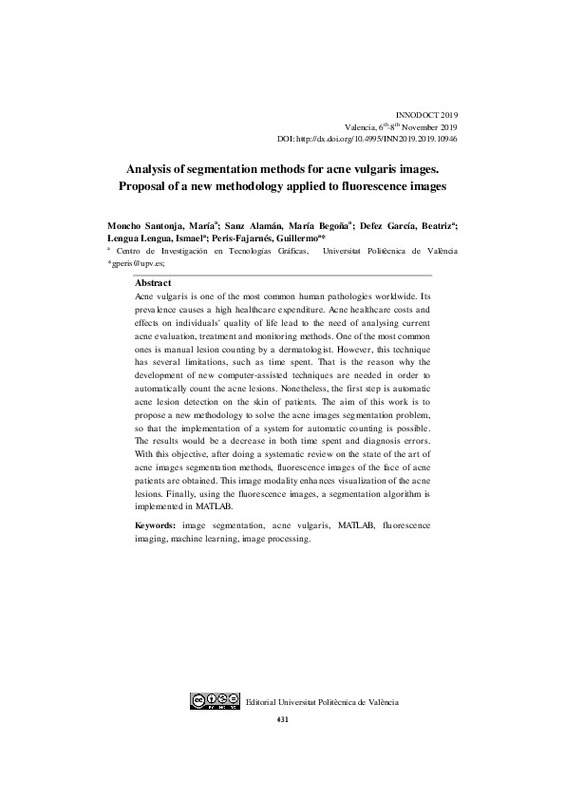JavaScript is disabled for your browser. Some features of this site may not work without it.
Buscar en RiuNet
Listar
Mi cuenta
Estadísticas
Ayuda RiuNet
Admin. UPV
Analysis of segmentation methods for acne vulgaris images. Proposal of a new methodology applied to fluorescence images
Mostrar el registro completo del ítem
Moncho Santonja, M.; Sanz Alamán, MB.; Defez Garcia, B.; Lengua Lengua, I.; Peris Fajarnes, G. (2020). Analysis of segmentation methods for acne vulgaris images. Proposal of a new methodology applied to fluorescence images. Editorial Universitat Politècnica de València. 431-440. https://doi.org/10.4995/INN2019.2019.10946
Por favor, use este identificador para citar o enlazar este ítem: http://hdl.handle.net/10251/153264









